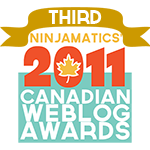I feel like right now there are three strong alternatives to traditional education --Montessori, Waldorf, and Reggio Emelia. They share some common elements, but are still quite different from one another. I’ll speak to each of these in relation to early years learning (pre-kindergarten/kindergarten) as this is the area that I am the most knowledgeable about and also what I think would pertain to the majority of my blog readers.
Here’s my little run-down of each method:
Montessori
The focus in
a Montessori classroom is on child-directed learning through the use of specifically
designed materials created and set up to further the child’s independence and curiosity. Children have the freedom to choose
activities and explore them without interruption. The classroom is usually quiet and calm, with
most students focused on individual tasks.
The classroom
is carefully prepared with materials (many specific to the method), most of
which are made of natural materials. The
materials are arranged from easiest to most complex and many contain control of
error, allowing the child to self-correct.The teacher’s main role is to observe the child, guide them when needed, present new tasks (to individuals or small groups) as the child shows interest and ability, and to prepare the classroom environment.
The traditional Montessori classroom is set up in multi-age groupings. This allows for younger children to learn from their older peers and older children to act as role models/ mentors.
Criticisms:
-anyone, trained or not, can call themselves a “Montessori” teacher or school. If you’re considering going this route it is a good idea to ask what the teachers’ credentials are.
-depending on the teachers/ school, it can be quite rigid.
-critics say that creativity can be stifled in Montessori environment. If I were going this route, I would inquire as to how the arts and movement are incorporated into the program.
Waldorf
The aim of
Waldorf education is to nurture the whole child, raising him to his fullest
potential.
Waldorf
classrooms are beautiful (often pastel-coloured), simple, learning environments. In the younger grades, there is a strong
emphasis is on imagination and creativity, with extensive time allowed for
guided free play using natural materials.
Oral language and daily, weekly
and seasonal rhythm/ routines are strongly emphasized.
The teacher acts
are a role model and stays with the same class throughout their elementary
years.
Criticisms:-children are held back from academic learning, even when ready.
-parents are expected to adhere to the philosophy at home, including a ban on television/screen time, and clothing free of commercial images.
-there is a focus on imaginary woodland creatures (faries, gnomes, etc.), which I, personally, feel is a little bit bizarre.
-I also found there to be unacknowledged Christian undertones, which mainly bothered me for being unacknowledged in a school that claims to be non-denominational.
Reggio Emilia
This approach
contains no pre-determined curriculum, but gives children control over their
own learning, encouraging small group project work and self-expression where
children, teachers, and community members work collaboratively.
Focused
academic instruction is not formally provided, rather children learn to
symbolically represent their ideas and feelings through any of their “hundreds
of languages” (words, movement, drawing, music, etc.) as they record their
ideas to communicate with others.
Work is
displayed around the classroom. The
classroom is seen as an extension of the child’s world. It is a busy environment, where children are
actively engaged in their various projects.
Criticisms:
-lack of curriculum and focused academic instruction.
-expected parental involvement may be a challenge for working parents.
-students who are not interested in what the group is doing may feel excluded or coerced into inquiring into a topic in which they have little to no interest.
-lack of curriculum and focused academic instruction.
-expected parental involvement may be a challenge for working parents.
-students who are not interested in what the group is doing may feel excluded or coerced into inquiring into a topic in which they have little to no interest.
Hopefully
that provides just a small bit of background to anyone who is interested in any
of these alternatives to traditional education.
In my opinion, the “best choice” most often boils down to what best
suits the child as an individual and the teachers giving the instruction. As a parent, you need to look at what you feel
is best for your little one(s) and trust your instincts. You all already knew that though. ;)
For anyone
who is interested, The Bean is not in any of these types of programs, but does
attend a lovely little home daycare/preschool where he gets lots of
unstructured play time, some group “lessons”, stories, art, outdoor time and outings. As I know I’ve said before, we’re very happy
with where he is and have no plans to send him elsewhere for the time
being.





Thanks for this breakdown- very interesting. I think our Montessori is doing ok with creativity for the most part. Curly does get to draw and color, and read books of his choosing. Not sure how into other art projects they are, or imagination, but I'll find out.
ReplyDeleteThanks for the breakdown! I did some dabbling research into Reggio last summer when I did some work about it for a client and was sad to learn there was only one program in P-burgh and that basically only CMU employees' children can attend. But we won the lottery and our kids get to attend the public Montessori school here! So far it's just been so wonderful for our older kiddo. My nephews go to a public Waldorf, though, so I'm always thinking about how the programs compare.
ReplyDeleteGreat summary!
ReplyDelete